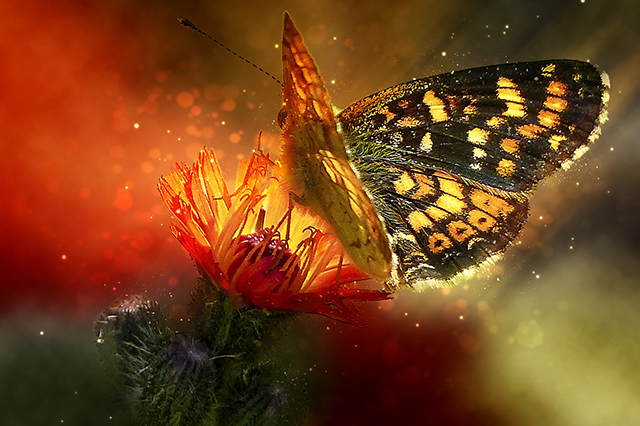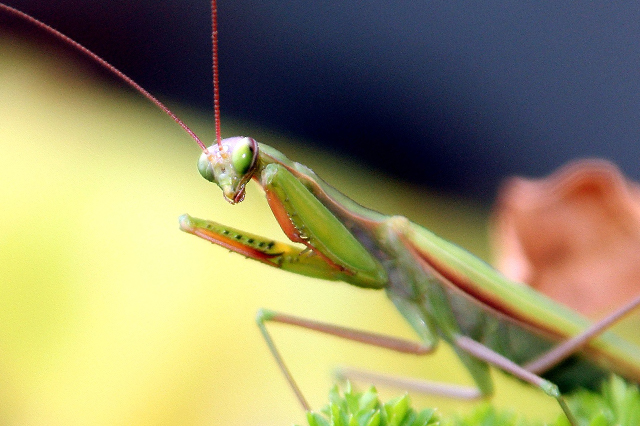Prevent harmful insect infestations from causing your garden health to decline. Knowing which garden bugs are beneficial will help you cultivate a healthier and more robust garden.
gardeninginfo-online.com gathered information about 5 good garden bugs, the insects they feast on, their preferred plant, and how to protect them.
Beneficial Garden Insects
Not all insects mean you or your garden harm. In fact, there are several insect species that prey on other destructive insects and even those that strengthen your garden’s health by serving as pollinators. The following are some of the insects you should welcome into your garden:
1. Ladybugs (Coccinellidae)
Ladybugs are small insects and usually rounded in shape. Their wing covers (elytra) can be seen in yellow, orange, or red, typically with small black dots on them. Some ladybug species are solid black, and all of them have black legs, heads, and antennae.
Diet – Ladybugs voraciously devour plant-eating insects, like aphids, and in doing so, they help protect plant and crop health. Ladybugs lay hundreds of eggs amidst colonies of aphids and other plant-eating pests.
Favorite Plant – Their favorite plants include marigolds, geraniums, sunflowers, calendula, cilantro, and dill.
Shelter/Protection – You can buy or build a ladybug shelter then hang or position it near any of the plants mentioned above.
Lifespan – Adult ladybugs live up to one year.
2. Praying Mantis (Mantodea)
Mantises are an order of insects containing nearly 2,500 species. Mantises can be found worldwide in temperate and tropical wooded and garden habitats. They have triangular heads with bulging eyes supported on flexible necks.
Diet – Gardeners and farmers worldwide welcome mantises because the insects they consume are often detrimental to gardens and crops. In addition to insects like crickets and grasshoppers, their appetite extends to spiders, frogs, lizards, and even small birds.
Favorite Plant – Praying mantises are attracted to plants like fennel, marigolds, and dill.
Shelter/Protection – Praying mantises like to hide in plants and grassy areas.
Lifespan – A praying mantis will live approximately 6 months in the wild and up to two years in captivity.
3. Bees (Anthophila)
Most bees are found to have short, thick bodies covered with hair and, like all insects, six legs and three body parts, including a head, a thorax, and an abdomen. The thorax, in turn, has three segments, each with a pair of legs. A small waist connects the thorax and abdomen. Only female bees have stingers.
Diet – Honey bees spend most of their lives collecting pollen and nectar from flowering plants, including milkweed, dandelions, clover, and many flowering trees. It is the workers that forage for food, consuming as much nectar from each flower as they can while subsequently pollinating the plants they visit.
Favorite Plant – Among sunflowers, daisies, honeysuckle, mint, clover, lilacs, lavender, and wisteria, bees are attracted to and will pay multiple visits to most flowering plants and trees.
Shelter/Protection – Bound hollow reeds or simple cardboard tubes placed in sheltered areas are a perfect habitat for solitary, hole-nesting bees.
Lifespan – The lifespan of a typical worker honey bee ranges from 30 to 60 days.
4. Dragonflies (Anisoptera)
Dragonflies have long, delicate, transparent wings, with some having light yellow coloring near the tips. Their bodies are long and slender, and they have short antennae. Dragonflies are very colorful, agile, and indiscriminate predators.
Diet – Adult dragonflies will consume any insect they can catch. They usually prefer eating mosquitoes, flies, gnats, and mayflies. However, their diet can include butterflies, moths, bees, and even other dragonflies. Dragonflies will eat their own weight in insects daily. This insect is extremely agile and catches its prey while in flight.
Favorite Plant – Dragonflies typically breed around water. Their offspring need places to hide, and they love submerged and floating pond plants (eelgrass, baby pondweed, water lilies, and lotus flowers).
Shelter/Protection – Dragonflies will seek shelter from wind, rain, and predators in densely-branched trees and shrubs, thick ground vegetation, evergreens, or even a tree cavity.
Lifespan – Dragonflies can live from 10 to 60 days on average, with some adults reaching as much as 6 months with ideal weather conditions.
5. Butterflies (Rhopalocera)
A butterfly is a flying insect with a small body and large, often colorfully patterned wings. Butterflies are closely related to moths, which also have large wings in proportion to their bodies and antennae. A butterfly is distinctive because of its relatively large size and beautifully “painted” wings. The life of butterflies is closely bound to flowering plants, shrubs, and trees on which their larvae (caterpillars) feed on, and their adults pollinate, feed on, and eventually lay their eggs on.
Diet – Because of straw-like mouthparts (proboscis), butterflies are almost completely restricted to a liquid diet. Butterflies use their proboscis for drinking nectar from flowers. While plants like dill, fennel, and milkweed provide sustenance for butterfly larvae.
Favorite Plant – Butterflies prefer nectar and pollen-rich blooming plants like wildflowers and multiple flower varieties. Blooming annuals, perennials, and shrubs provide a continuous supply of nectar and pollen throughout the growing season.
Shelter/Protection – Butterflies look for shelter from the rain when the skies start to grow dark and periods with strong winds. They effortlessly cling to the underside of leaves, climb deep into tall grasses, or hide themselves in rock cracks or deep fissures in tree bark.
Lifespan – Most butterfly species can live for 4 weeks, with some living several months and even fewer reaching 1 year.
Beneficial Garden Insects
In this article, you discovered several beneficial garden insects, the bad insects they eliminate, their preferred plants, and how to help them thrive.
Attracting and supporting beneficial insects in your garden will improve plant integrity, your garden’s overall health, and prevent nuisance insects from causing a catastrophic infestation.
Allowing bad insects to thrive in your garden will result in unhealthy, damaged, infested, and dying plants.
Sources:
extension.uga.edu/topic-areas/animal-production/bees.html
uky.edu/hort/butterflies/all-about-butterflies
gardeningsolutions.ifas.ufl.edu/design/gardening-with-wildlife/dragonflies.html
today.tamu.edu/2021/12/03/are-ladybugs-harmful/
texasinsects.tamu.edu/praying-mantis/
The post 5 Good Bugs for Your Garden appeared first on http://gardeninginfo-online.com.






No comments:
Post a Comment